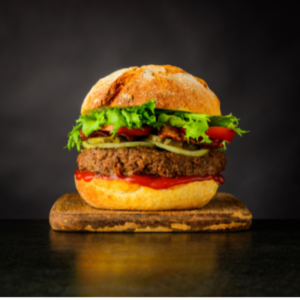The Global Evolution of the Sandwich: From Simple Fillings to Gastronomic Icons
Sandwich Varieties: From World Classics to Nutritious Favorites
The sandwich, a creation as simple as it is ingenious, has become one of the mainstays of the world’s diet.
With endless variations across cultures and continents, it caters for all tastes and nutritional needs, making it a universal dish.
This article will uncover the sandwich’s humble origins, explore its global evolution and highlight the role it plays in contemporary nutrition.
The sandwich, a versatile and ubiquitous culinary invention, has traveled and transformed across cultures and continents.
At each stop, it absorbs local characteristics, resulting in dishes that go far beyond two slices of bread.
This article embraces the historical journey of the sandwich and celebrates its various interpretations, including the iconic American hamburger and the delicious bauru paulista.
Origins and History
The history of the sandwich dates back to the 18th century, attributed to John Montagu, the 4th Earl of Sandwich.
Legend has it that, in order not to interrupt his card game, Montagu asked to be served meat between two slices of bread, and thus the “sandwich” was born.
This British invention quickly spread around the world, taking on different shapes and flavors.
Since then, it has evolved to become a staple in kitchens around the world.
The need for practicality and speed in eating has contributed to the popularization of the sandwich, making it a vehicle for the expression of local culinary traditions.
Varieties and Culinary Characteristics

The American Hamburger: An icon of fast food, the hamburger is a representation of American culture and taste.
Simple in its basic form – a grilled meat patty served in a round bun with a variety of toppings – the hamburger has evolved into a canvas of gastronomic expression, incorporating gourmet ingredients and bold flavors.

The Bauru Paulista: From Brazil, more precisely from São Paulo, comes the Bauru, which takes ham, melted cheese, tomato and pickles on a French roll. Legend has it that it was created by a student called Casimiro Pinto Neto, nicknamed “Bauru” after his hometown.
The English Classic: Conserving its roots, the English sandwich remains simple, often containing fillings such as cucumber, eggs and cress or fish and French fries, reflecting the local cuisine.
The New Orleans Po’boy: This robust sandwich is filled with fried meat or seafood and dressed with remoulade sauce, reflecting Louisiana’s fusion of cultures and flavors.
The Vietnamese Bánh Mì: French influence and Vietnamese flavors collide in this sandwich, which combines meat or tofu with pickled vegetables, cilantro and mayonnaise on a crusty baguette.
The Italian Panino: Grilled and pressed, the panino is filled with ingredients such as mozzarella, tomatoes, Parma ham and arugula, showcasing the fresh and simple flavors of Italy.
The Middle Eastern Shawarma: Marinated meat, thinly sliced and served in pita bread with tahini, vegetables and sometimes fries, shawarma is a reflection of the Middle East’s love of rich flavors and varied textures.
Nutritional Value: Nutritionally, the sandwich can be a complete meal, providing carbohydrates, proteins, fats, fiber and a range of vitamins and minerals, depending on the ingredients chosen.
Wholegrain breads offer higher fiber and micronutrient content, while vegetable fillings increase the intake of vitamins, minerals and antioxidants.
Lean proteins such as chicken breast, tofu and fish are excellent for a balanced sandwich.
The key is in the combination of ingredients to create a nutritious and satisfying meal.
Conclusion
The sandwich is a blank canvas for culinary creativity and a reflection of a region’s food traditions.
From quick snack to gourmet meal, it adapts to all occasions.
By considering the choices of ingredients, we can transform the humble sandwich into a rich and diverse source of nutrition, satisfying palates and contributing to a healthy diet.